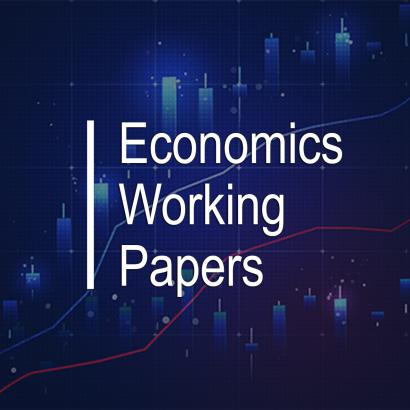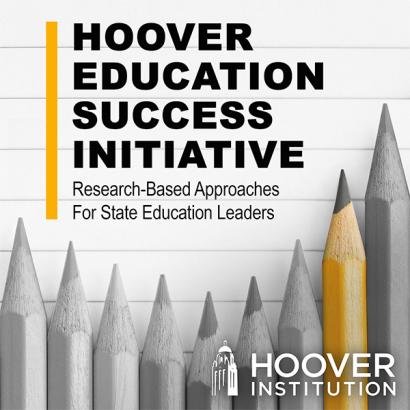This Friday, Terry Anderson and Holly Fretwell argue that an accurate history of national parks in the United States would acknowledge, rather than minimize, the dislocation of Native American tribes; Mike Kuiken and Michael Schiffer caution against underestimating China’s progress and potential in robotics; and John Cochrane distills many years of his research on inflation into a one-hour presentation given this week at Hoover.
Revitalizing American Institutions
In a guest opinion column at The Wall Street Journal, Senior Fellow Terry Anderson and coauthor Holly Fretwell argue that, a “full and accurate history would recognize that national parks weren’t created democratically, nor are they a reflection of our best.” Rather, they demonstrate, US national parks “were created at the expense of Native Americans.” Among other examples, Anderson and Fretwell write that the “creation of Yosemite National Park in 1890 gradually pushed out the Southern Sierra Miwok people.” The column argues that “parks owned and operated by tribes are better stewarded.” What’s more, “Tribal parks are also an engine of economic opportunity and self-determination for Indian nations.” “Honesty about their origins can’t undo the damage of taking tribal lands,” the piece concludes, “but it can help Americans recognize the perverse power that comes with political management of land and people.” Read more here. [Subscription required]
Confronting and Competing with China
In an essay published at The National Interest, Distinguished Visiting Fellow Mike Kuiken and coauthor Michael Schiffer argue that it would be a mistake to dismiss what appear to be harmless, early-stage robotics accomplishments in the People’s Republic of China. After recounting some robotic glitches and flailing displayed at the August 2025 World Humanoid Robotic Games held in Beijing, the authors warn that “dismissing China’s efforts based on current stumbles would be shortsighted in the extreme, given the rapid improvement and massive resources deployed.” The piece demonstrates how “Beijing’s dominance in humanoid robotics isn’t an isolated achievement—it’s part of a deliberate, state-directed strategy that spans artificial intelligence, biotechnology, and quantum computing.” To enhance American competitiveness in the field, the authors argue that “federal procurement should create real domestic demand for American humanoid robotics, the way defense contracts built the aerospace industry.” Read more here.
Answering Challenges to Advanced Economies
On Wednesday, October 15, Economic Policy Working Group co-organizers John H. Cochrane and Valerie Ramey hosted a panel on inflation. This talk attempted to compress 20 years of thinking about inflation into a digestible hour. Cochrane discusses how the 2021 inflation resulted from a fiscal shock, drawing on the fiscal theory of the price level. This theory says debt and deficits cause inflation when people do not have faith they will be repaid, prompting them not to hold the debt as savings but to try to spend it instead. Cochrane interprets 2021 in that light and shows how the simple fiscal theory model of a fiscal shock and monetary response accounts well for the episode. According to Cochrane, we still do not have a simple economic model in which higher interest rates lower inflation going forward, but he shows a few ingredients that help to bridge the gap. Watch here.
Distinguished Visiting Fellow Kevin Warsh, a former Federal Reserve governor, joined Special Report with Bret Baier to discuss the current US financial landscape, the government shutdown, and potential additional interest rate cuts. Warsh notes that with the high volume of international negotiations and major global events taking place currently, markets need a “little time to digest news.” Warsh says that in his view, based on market performance and available economic data, “the economy is actually accelerating.” Warsh also notes that the ongoing government shutdown has been an item of concern for many at the International Monetary Fund, World Bank, and Federal Reserve—but he explains why he does not share their concerns over possible stagflation or slower growth. Warsh says Trump administration policies in deregulation and taxation have helped spur a “massive amount of capital expenditures” that will be “very good for growth” headed into 2026. Watch here.
A new short video from Hoover’s Tennenbaum Program for Fact-Based Policy Here’s What We Know series examines whether Social Security’s structural financial challenges can be overcome. As the video shows, today’s workers pay for the benefits of current Social Security recipients. But the worker-to-beneficiary ratio is shrinking. What used to be almost nine workers to every one beneficiary is now less than three to one. Payroll taxes alone can no longer fund $1.6 trillion dollars in benefits for 2025 and beyond. Unless meaningful reforms are made to the program, the Social Security trust fund will run dry in less than ten years. If that were to happen, benefits would have to be slashed by nearly 25 percent. You can learn more about Hoover’s research into Social Security—and how to secure its financial sustainability long-term—by clicking the above link to the Tennenbaum program webpage. Watch here.










Related Commentary